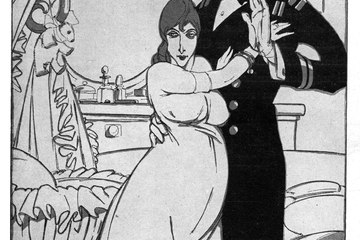Sexual assault in the First World War
The invasion of enemy troops was followed systematically by pillaging, destruction, deportation, rape and the execution of civilians. Sexual assaults by soldiers passing through or stationed in the occupied territory were part and parcel of daily life for the female population.










